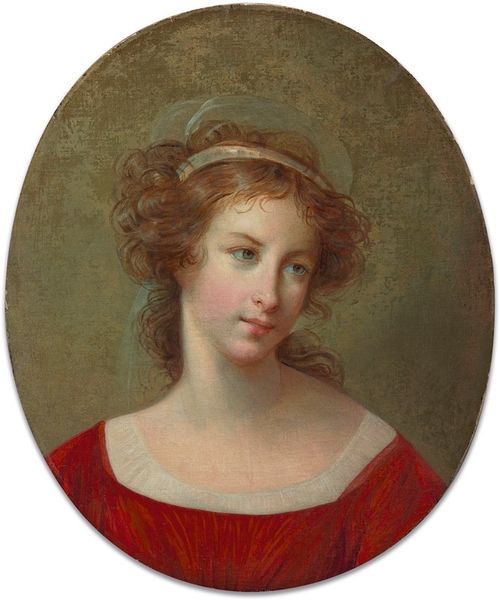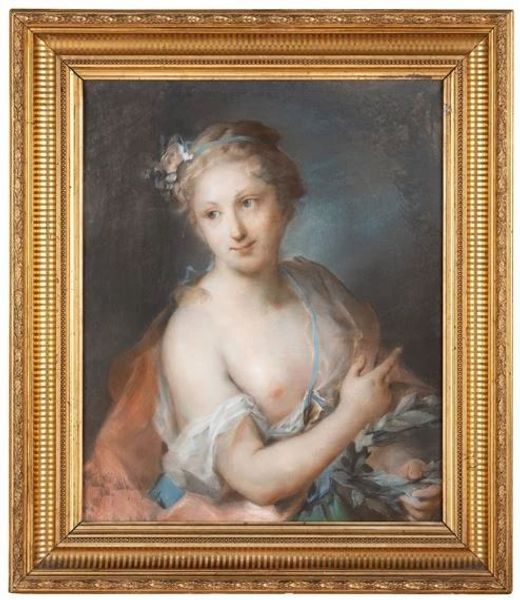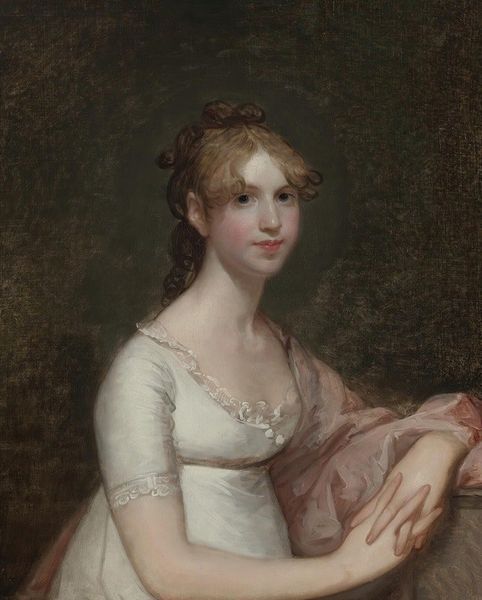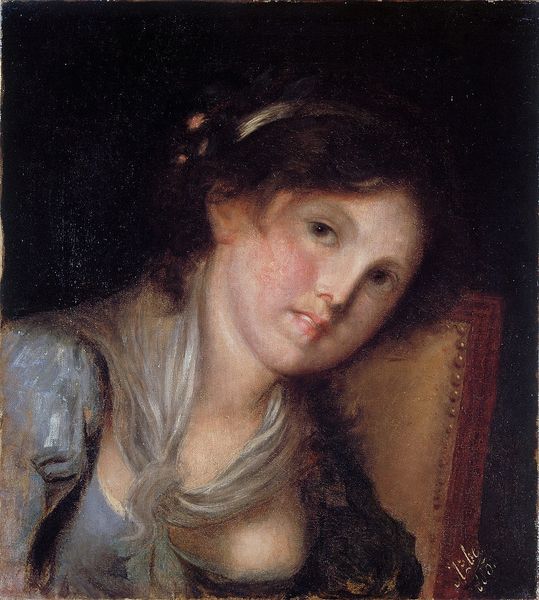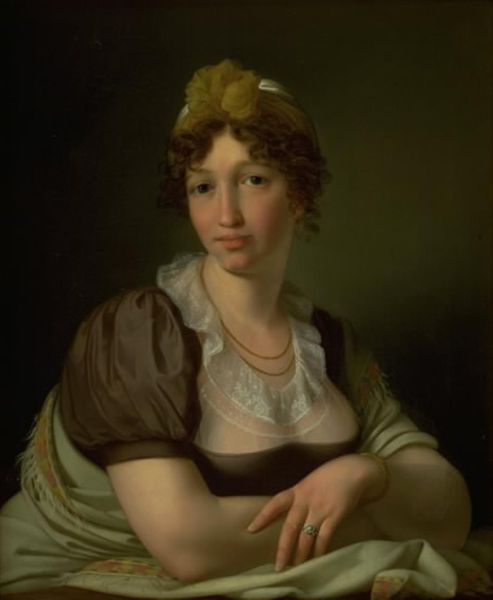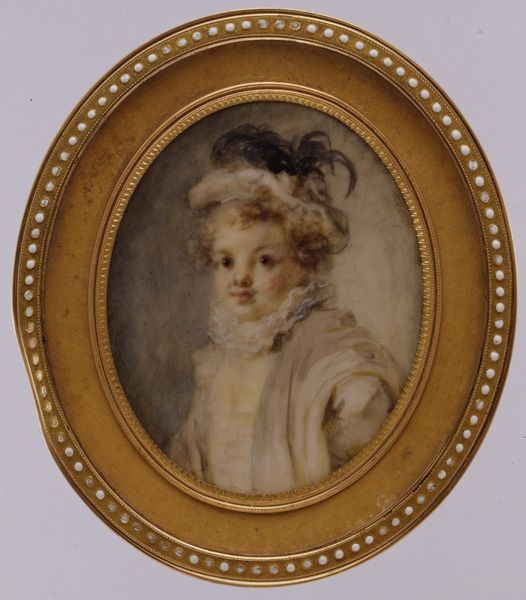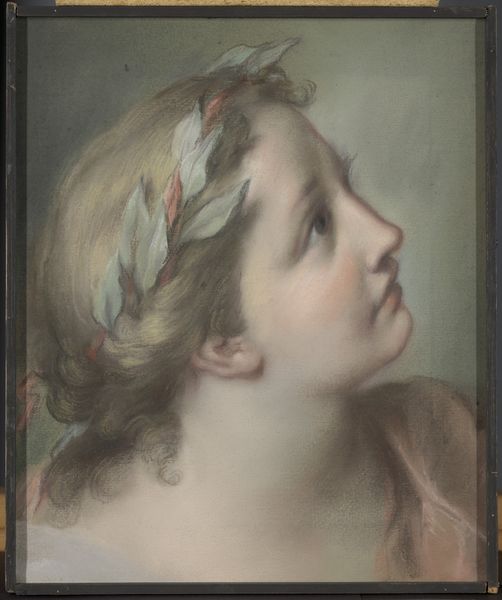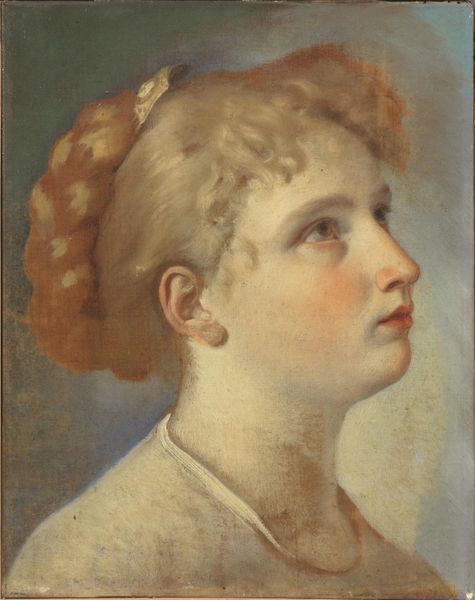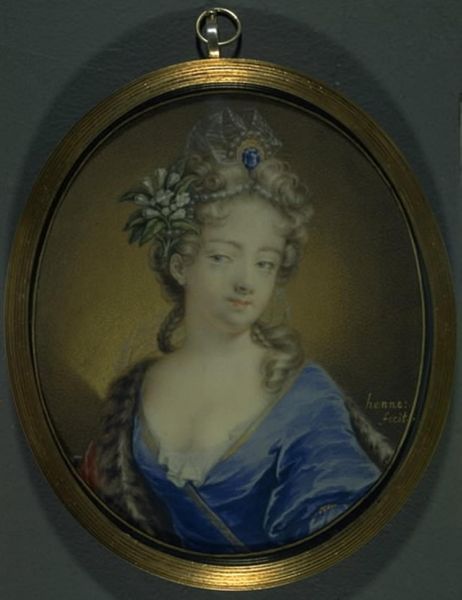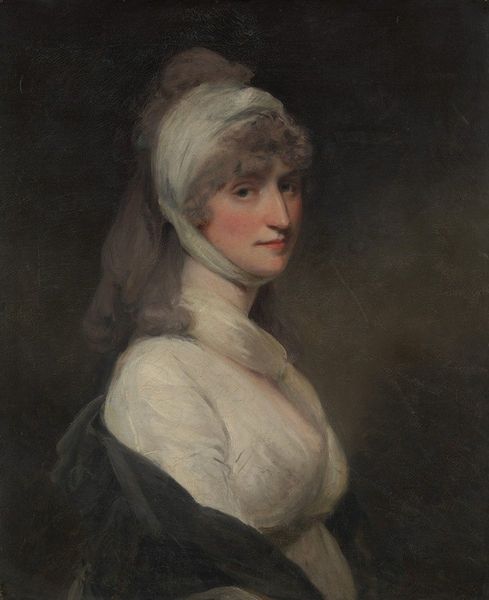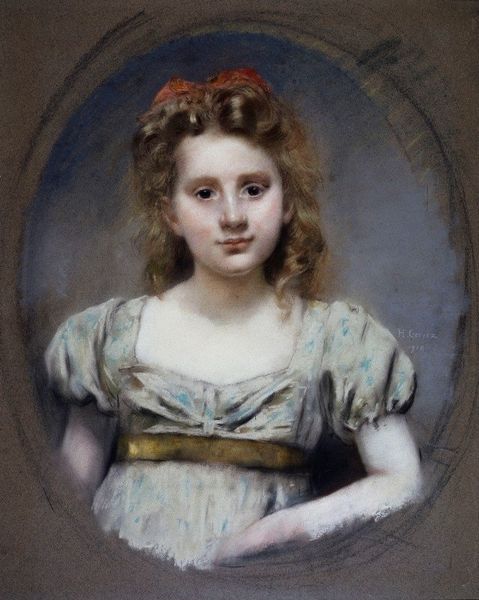
En ung pige bøjer sig fremad mod h. side, og ser henover sin h. skulder, så profilen kommer til syne. Det blonde hår er bundet op i fletninger, og en lys dragt omhyller bryst og skuldre. 1703
0:00
0:00
Dimensions: 325 mm (height) x 273 mm (width) (billedmaal)
Curator: Looking at this oil painting, we have Benedetto Luti’s “A young girl leaning forward towards the right side, and looking over her right shoulder, so that the profile is visible. The blond hair is tied up in braids, and a light garment surrounds her chest and shoulders.” from 1703. Editor: There's something quite intriguing about the use of light here. It casts a very subtle glow, almost angelic, across her face. What’s your first impression? Curator: It’s definitely in line with the aesthetic sensibilities of the Baroque and early Rococo periods—an idealized vision of female beauty, presented with a certain dramatic flair that served specific social and political functions. We see here how portraiture became increasingly about projecting power and grace. Editor: Absolutely, and I’d add it shows an attention to detail—notice the brushwork capturing the softness of the fabric, and then how those visual textures contrast to emphasize skin. These elements seem designed to emphasize luxury through meticulous, artisanal technique. What do we know about Luti’s patronage? Curator: Luti, who was active in Rome, occupied a central position as both a painter and a leading art dealer. In addition to his activity as a pastel portraitist, he was responsible for ceiling frescoes in Roman churches. It's hard to determine what societal class his painting targets. It’s likely that it targeted a person from a position of influence with close links to religious authorities, or for erudite nobility, not focused exclusively on the wealthy merchant or middle classes. Editor: Well, I am left thinking of how skilled hands crafted a likeness meant not just to represent someone, but to broadcast a certain standing within their society, perhaps also using materials accessible at that time. The craftsmanship alone speaks volumes. Curator: Indeed. Looking closer, it underscores how artistic commissions also reinforce hierarchies through controlled production and curated consumption of imagery. It really tells us a lot about the prevailing tastes and structures of that time.
Comments
No comments
Be the first to comment and join the conversation on the ultimate creative platform.
